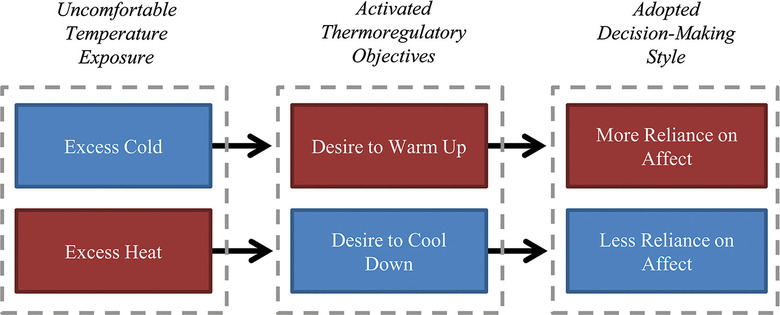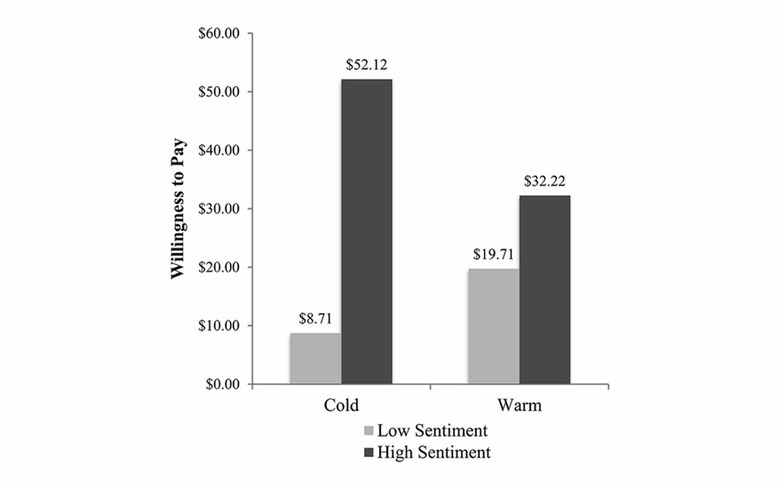Report: How dressing warm can save you money
Research shows that an uncomfortable temperature makes a person make affective decisions. If you're cold, you tend to make decisions based on feeling and emotion rather than in a more objective manner. As such, it makes a whole lot of sense that the more expensive the store you visit, the more likely it is that the temperature is purposefully edging over what you might consider "uncomfortably cold."
Part of this is obvious
Research has been done on human activity in response to temperature. Consumer response to modest changes in temperature has been researched multiple times before. The most recent bit of research – and what we're examining today – explores human response to exposure to uncomfortable temperatures.
Some of this may seem obvious – and it should. When you feel very cold, you seek out warmth. When you feel extremely warm, you try to cool down. Previous research found that humans generally seek out "metaphorically warm stimuli" in addition to actual warmth in response to cold weather outside.
In a new study published this month, researchers showed that consumers tend to be more affect-driven when in uncomfortable coldness. They also showed that adopting an affective decision-making style made consumers feel warmer and more comfortable. In a third of three test results, this study showed that the colder the the weather, the more amplified the effects are consumer's tendencies to made decisions based on emotions vs facts.

The research published this month suggests that in warm environments, people tend to make less affective decisions. The research also shows that in cold environments, people tend to made affective decisions. It's been posited that these causations remain largely true when warm or cold temperatures are above or below the consumer's threshold for comfort.
• Affective: based on feelings and emotions
• Cognitive: objective, fact-based, not influenced by feelings or emotions
Test 1: Decision-making
In the first test of the study, two hundred and one individuals were shown advertisements in a variety of temperatures. They were asked to watch these advertisements and "use either their feelings or evaluative thoughts" to assess what they saw. This study found the following: "participants who were given instructions to assess the advertisements using affective judgements reported feeling warmer than those individuals instructed to use cognitive judgements."
Test 2: Affective change
One hundred and seventeen people were part of a second set of tests. Participants were made to feel uncomfortably cold or warm. Participants were randomly assigned tasks which would induce either an affective or cognitive decision-making style. Each were asked to describe their feelings or evaluative thoughts while assessing a series of scenarios, like "going to a rock concert" or "spending Thanksgiving with your family."
After the task, participants were asked to indicate their temperature-related comfort. The results showed a "significant temperature x instructions interaction" on the thermal comfort of the people in the study.
Test 3: Discomfort leads to instinctive style of decision-making
A final study of one hundred and sixty-four people sought results with extreme temperatures between 38°F–145°F. Like the previous test, this test relied on the participant holding a cup of liquid which was within the stated temperature range.*
*It is a little odd here that they didn't opt to change the temperature of the environment in which the study was conducted. This cup-holding method of changing the perceived comfort of the participant is good enough for this study, but we'd like to see a more full environment temperature set of tests run in future tests.
Participants were presented with a "wildlife conservation scenario" that involved rescue efforts to save pandas. This scenario was adapted from previous similar tests from research done on similar stimuli done in the past, as noted in the paper. Participants were then asked about what they relied upon to assess the scenario: "My thoughts/my feelings," "my rational side/my emotional side," and "my head/my heart."
This test's results showed that "the colder the temperature, the more participants would rely on affect."
Use at your own peril
Only you know your comfort threshold, and only you can make the right decision when it comes to comfort. If you're having money trouble in the winter, buying a billion things on Amazon the whole season long, consider investing in warmer clothing. If you're uncomfortably cold, chances are you're going to be more easily seduced by advertisements that seek to manipulate your emotions.
On the other hand, don't sit in a winter coat all summer long, expecting to get rich. This is only one piece of the puzzle that is personal economic stability. You've still got to get out there and cash in, no matter who you are, or how uncomfortable your environment.
Christmas time bonus! Part of this study also sought participants willingness to pay differing amounts of money for insurance when it had high vs low sentimental value. This test was done in a cold environment and a warm environment – guess which one placed greater value on sentiment?

If you'd like to learn more about this research, head over to "Warm Hearts and Cool Heads: Uncomfortable Temperature Influences Reliance on Affect in Decision-Making" as published by the University of Chicago Press Journals. This paper can be found in the Journal of the Association for Consumer Research, Volume 4, Number 2, April 2019.
